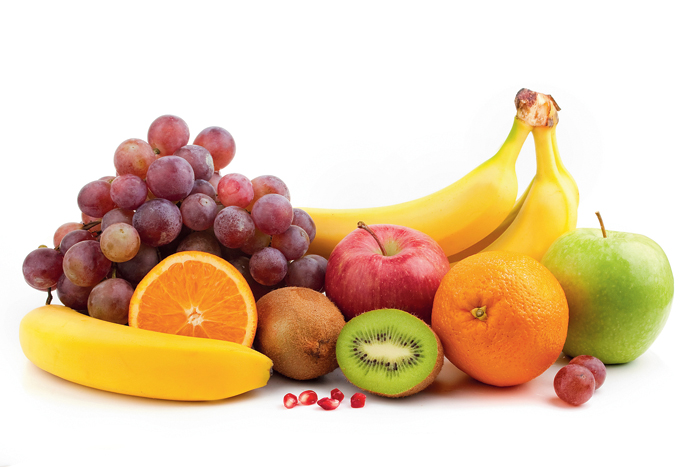
C’mon, be seasonable now! -eating seasonal is also a cultural phenomenon, irrespective of the actual availability of the food item
Don't Miss

While talking of the season, something unusual happened the other day. I was out shopping for groceries at one of the local supermarkets for the truncated Diwali celebrations at home. While in the fruit aisle, comparing apples and oranges to decide which offered greater VFM, I see a full crate of ripe, yellow, mangoes — in mid-November! I was trying to regain my composure and recover from the loud gasp I had let out and had fellow shoppers look at me funny, my mind was racing to capture the incident of actually seeing plump, ripe mangoes while there is a pronounced chill in the air.
It’s not something I have seen often. A cursory glance at the MRP had my pulse racing even faster. Why would anyone want to have fresh mangoes at the four-figure price a kilogram, in November? Why?
Growing up, mangoes meant summer and invariably the change of seasons brought about a definitive change in diet. From litchi to mulberry, melons to jamun, summers were the time for relishing an abundance of fruits and the larger canvas of memories included school holidays, late sunsets and generally doing the ‘summer’ things.
Likewise, winters are associated with oranges, apples and grapes and plentiful vegetables, which included but were not limited to fresh green peas, radish, spinach, carrots and beetroot.
Although I have mentioned my specific circumstances here, it is certainly true that anywhere you go in the world, even the places with most moderate climates, there certainly are farm produce that define seasons and people, in general, identify most products with a distinct period of the year.
Historically, across the world, the season has defined food habits of people. The starting point might be the multitude of harvest festivals all over the globe, where a bountiful harvest is celebrated along with the change in seasons. Be it the Sankranti in India, the Thanksgiving in the US, the Sukkot of Israel, or the Olivagando of Italy, the celebration of the harvest also generally signifies the change of seasons.
All over the globe, most harvest festivals celebrate and feature the consumption of the new crop of the season, thereby indicating the availability of the seasonal food that is to be available till the next harvest. Although many foods are harvested more than once a year, these also have distinct characteristics of their own and are enjoyed in recipes that are attuned to their usage.
As well as that, especially in countries and regions with cold climates, people begin the process of preserving foods so that they are available in some form or the other the entire year round and also to ensure that the plentiful food does not go to waste. In essence, nature has created food cycles in a way that we enjoy certain foods at certain times of the year. This is what creates balance and harmony.
I know it sounds confusing and it is true that the seasonality, in its truest sense can only be completely applicable in the absence of cultivation, transportation, storage and demand of a certain food product at a certain time of the year, but with the increasing use of technology in agriculture, it is now theoretically possible to have everything, all the time. Hence, those mangoes in November.
Having said this, eating seasonal is also a cultural phenomenon, irrespective of the actual availability of the food item. In a report published on Cambridge.org, it was noted that very few people in the UK choose to eat berries in winters whereas those are available in supermarkets since summers are culturally and historically celebrated as ‘months of fresh berries’.
Although availability itself is a definitive argument to vouch for eating seasonal, it is also true that there is an increasing trend of eating frozen and preserved foods primarily due to the year-round availability of many erstwhile strictly seasonal produce, generally owing to the factors of exclusivity and demand in the ‘gourmet’ segment of the food market.
Let us put forward a few arguments to advocate the evident logic of seasonal eating and also to see the impact this can have on our health and the health of the environment.
Unlike the Western countries where ‘summers are for everything’ in India, I do believe that as far as food is concerned, ‘winters are for everything’. A cursory glance at the resplendent red carrots, the glistening ‘methi’ and the tender green peas can have the strongest cook weak in the knees.
The ingredients for this dish are in full glory at this time of the year — beautiful local tomatoes, homemade mozzarella and a vibrant green pesto made with the winter greens and nuts — all hallmarks of the bounties of the season.
Nature has provided for the specific seasonal nutritive needs of the body by producing the compatible foods at that time of the year. In winters, foods rich in vitamin C such as oranges and guavas are eaten as they strengthen the immune system against the winter ailments like cold and flu. In summers, when we sweat a lot, diuretics such as watermelon and cucumbers aid the body’s natural response to keep it cool and hydrated.
Ingredients
⚫ Fresh basil: 50g
⚫ Fresh coriander: 50g
⚫ Fresh baby spinach: 50g
⚫ Walnuts: 40g
⚫ Olive oil: 50ml
⚫ Grated parmesan cheese: 40g
⚫ Garlic: 5gm
⚫ Lemon juice: 10ml
⚫ Fresh Milk(non-pasteurised, get from the local milkman): 1 litre
⚫ Make the pesto first. Put all ingredients except the olive oil and the cheese in a blender, blend till semi-smooth, add the oil and the cheese, blend to combine. This can be made in advance and stored. Should not be too smooth, but slightly coarse to retain the texture.
⚫Making the mozzarella at home is a little time consuming but not difficult. Heat the milk until very warm but not boiling, add the vinegar slowly while continuously stirring with a spatula. Slowly the milk curds will start to separate. Once separate, gather the cheese ball. Now dunk this ball in hot water multiple times for around 7-8 minutes each time. The leftover whey can be used too. Once the cheese is smooth, dunk into ice-cold water several times, wrap in a cling film and store in the freezer.
Vikas Kumar is the executive chef of Flurys. You can reach him at vkumar@flurys.com







0 Response to "C’mon, be seasonable now! -eating seasonal is also a cultural phenomenon, irrespective of the actual availability of the food item"
Post a Comment
Disclaimer Note:
The views expressed in the articles published here are solely those of the author and do not necessarily reflect the official policy, position, or perspective of Kalimpong News or KalimNews. Kalimpong News and KalimNews disclaim all liability for the published or posted articles, news, and information and assume no responsibility for the accuracy or validity of the content.
Kalimpong News is a non-profit online news platform managed by KalimNews and operated under the Kalimpong Press Club.
Comment Policy:
We encourage respectful and constructive discussions. Please ensure decency while commenting and register with your email ID to participate.
Note: only a member of this blog may post a comment.